“The Expedition of Genl Sullivan against the six nations seems by its effects to have exasperated than to have terrified or disabled them,” wrote Continental Congressman James Madison in June 1780.[1] This 1779 Patriot offensive, known as the Sullivan Campaign or the Sullivan-Clinton Campaign, was meant to teach the Loyalists and their Native American allies a violent lesson it was hoped they would not soon forget. The brutal effects from this epic military incursion are well documented, but much of the more widely-known published materials are concerned with the large-scale engagements throughout the state of New York rather than the more intimate but equally bloody and fierce smaller-scale fighting in neighboring Pennsylvania. John Reed, Pennsylvania’s President of the Supreme Executive Council, was so affected by the death and destruction caused in his state by vengeful Loyalists and Iroquois that he almost ordered a retaliatory attack, on the same scale of the Sullivan-Clinton Campaign, using the state’s own military resources; however, he was persuaded to wait for diplomats to negotiate the end of the war. Pennsylvania and New York has many scars received in 1780 that can still be viewed through the many memorials, gravestones, monuments, and historical markers scattered across both states.
In 1779, Gen. George Washington had ordered Maj. Gen. John Sullivan to command an expedition by Continental troops, supported by militia and a considerable amount of military resources, to end the “considerable mischief on the North East Corner of Pennsylvania” by the forces of the Crown.[2] Washington it was to the “highest degree distressing to have our frontier so continually harassed by this collection of Banditti under Brand [Joseph Brant] and Butler [Walter Butler].”[3] Washington was referring to the destructive raids launched the previous year against Pennsylvania’s Wyoming Valley and the New York settlements of German Flats and Cherry Valley. Although, there had been numerous previous attacks by British forces throughout these border regions since the outbreak of the war, these specific violent actions forced the Continental Congress to order Washington to conduct a purely punitive and devastating expedition against the Iroquois.
On paper, it appeared that Sullivan and Brig. Gen. James Clinton had successfully completed their assignment of annihilating the Iroquois threat by the fall of 1779. Their 4,000 soldiers leveled over forty Native American towns and villages, devastated countless orchards, and destroyed approximately 160,000 bushels of corn. The Iroquois had been compelled to abandon their homeland and seek refuge with their British allies at Fort Niagara while constantly suffering the pains of hunger and death from starvation during harsh winter of 1779-80.
 By the middle of November, over 2,628 refugees had fled from Sullivan’s troops to Fort Niagara, with these figures nearly doubling to over 5,000 by the end of 1779. Arrivals of Senecas, Cayugas, Delawares, Chugnuts, and Onondagas added to the already overcrowded conditions of the presently encamped Oquagas, Mohawks, Tuscaroras, Oneidas, a scattering of Loyalists, and some members of western Indian tribes.[4] Providing the necessities of life for all of these afflicted people, including his own garrison troops, was a major logistical problem for the British command. During the 1779-80 winter, the snow fell so much that it totaled over five feet deep in many areas. The cold was intense. Deer and other game animals died in countless numbers, thus depriving the Iroquois the opportunity to hunt for food. They were now almost fully dependent on the British, whose overseas shipments were extremely unreliable, and on profit-hungry local merchants eager to increase their wealth on the Iroquois misfortunes. This suffering only stoked the fires for revenge against the Patriots who had ruined their advanced towns, villages, and overall civilized lifestyle. The Sullivan-Clinton Expedition had no sooner departed from the Iroquois’ territory than these tribes were planning massive retaliation.
By the middle of November, over 2,628 refugees had fled from Sullivan’s troops to Fort Niagara, with these figures nearly doubling to over 5,000 by the end of 1779. Arrivals of Senecas, Cayugas, Delawares, Chugnuts, and Onondagas added to the already overcrowded conditions of the presently encamped Oquagas, Mohawks, Tuscaroras, Oneidas, a scattering of Loyalists, and some members of western Indian tribes.[4] Providing the necessities of life for all of these afflicted people, including his own garrison troops, was a major logistical problem for the British command. During the 1779-80 winter, the snow fell so much that it totaled over five feet deep in many areas. The cold was intense. Deer and other game animals died in countless numbers, thus depriving the Iroquois the opportunity to hunt for food. They were now almost fully dependent on the British, whose overseas shipments were extremely unreliable, and on profit-hungry local merchants eager to increase their wealth on the Iroquois misfortunes. This suffering only stoked the fires for revenge against the Patriots who had ruined their advanced towns, villages, and overall civilized lifestyle. The Sullivan-Clinton Expedition had no sooner departed from the Iroquois’ territory than these tribes were planning massive retaliation.
It is apparent that Sullivan had failed in his assignment, as he was unable to bring his adversaries into a classic major battle of annihilation. He also neglected to capture as many Native American women and children as possible to hold them as hostages against further threats from Iroquois warriors. As the dust from the expedition settled, many in the Patriot cause began to realize what Continental Congressman Joseph Jones recorded: “It is not improbable the Indians, United with some British troops and Tories may be troublesome this Summer in resentment for Sullivans treatment the last year which served rather to provoke than destroy or ruin.”[5] For all of this massive, carefully-planned and tactically successful undertaking on the part of the Continental Army, it is ironic that its overall strategic results were negligible.
The power of the Iroquois Six Nations was greatly reduced by the destruction of their villages and communities, but it was not broken. The renowned seventy-year-old Seneca Chief Sayenqueraghta (also known as Old Smoke) told his British allies, “Although we have received a severe blow, our Hearts are still good & strong, and our Arms are not feeble, neither are we at all discouraged. We lost our Country it is true, but this was to secure our Women & Children; and we do not look upon ourselves as overcome.”[6] Other chiefs reassured the Crown that, “we do not look upon ourselves as defeated for we never fought.” They pledged their revenge with a determination that “if it is the will of the Great Spirit [to] leave our Bones with those of the Rest of our Brethren rather than evacuate our Country or give our Enemy Room to say we fled from them.”[7] Clearly, Congressman Jones had foreseen the brutal events which were soon to occur along the frontier of Pennsylvania and throughout the entire neighboring state of New York.
The sudden thaw in 1780 from the harsh winter quickly ended the suspense on both sides of the conflict as to the repercussions from the Sullivan-Clinton Campaign. Although better travel weather brought a wave of new settlers to the frontier regions, such as those along the northern border of Pennsylvania, many of them required even more support and assistance than those who had preceded them. As the stage was set and the curtain rose on their new and renewed settlements, it would quickly become apparent that they would not be able to support one another or withstand a British onslaught unless outside help, such as external militia or Continental Troops, were offered. Nonetheless, the major American military forces were not able to offer much support as they had suffered from horrendous winter conditions in their cantonments in locations such as Morristown. The commander-in-chief, who had during the previous year been able to spare sixteen regiments to mount Sullivan and Clinton’s offensive, was now unable to extend the slightest support due to overwhelming problems such as supplying his starving army, suppressing several mutinies, the need for experienced troops in the southern states, obligations to support the new French alliance’s efforts in Rhode Island, and finally the devastation to morale of Benedict Arnold’s treason.
By early February 1780, the war chiefs of the Iroquois Nation began recruiting and assembling war parties, making snowshoes, and gathering supplies for the quickly approaching retaliatory campaign. On February 1, Fish Carrier (also known as Hijiagede) of the Cayugas declared to the British Superintendent of Indian Affairs, Col. Sir Guy Johnson, that eighty-eight of his warriors were gathered, but preliminary ritual ceremonies for war were necessary before they could depart. Since many key and knowledgeable elders had already fallen during the conflict, some of the crucial ceremonies for success were unknown or not fully familiar to the young warriors. A few knew the rituals, but were not competent to lead them. There was worry that if a necessary phrase or line was left out of a ceremony, their forthcoming campaign could become a disaster. Fish Carrier expressed this concern to Colonel Johnson, explaining that he could not conduct the old customs with the necessary precision and exactness.[8]
On February 11, following the appropriate ceremonies and other logistical preparations, the main war party, under the leadership of Joseph Brant, departed with over two hundred Native American warriors and six Loyalist Rangers. The Native American contingent included Cayugas, Tederighroonoes, Mohawks, Onondagas, Senecas, Delawares, and warriors from the villages of Onoquaga and Owego. Brant was in command with Fish Carrier and Tagaais of the Cayugas and David Karaghqunty and Tekarihogea of the Canajoharie Mohawks as the chief warriors.[9] After this force departed for its main objectives in New York, following a salute by four of the fort’s cannon, a smaller war party of approximately twenty-five headed toward the Susquehanna Region of Pennsylvania. As they advanced on their mission, warriors, returning from hunting, witnessed the war party and, with eagerness to strike back at the patriots, formed their own expeditions and shadowed them. Warriors such as Little Beard and Tanaghkewas advanced on the 26th with a war party of sixteen; additional forces under Chief Tobacco, Fish Hook, and Capt. Rowland Montour followed the next day. For the next ten months, there would be a steady and deadly assault on the settlements in New York and Pennsylvania by between 400 and 900 Native Americans and Loyalist Rangers from the British Indian Department. Clearly, the costly Sullivan-Clinton Campaign of the previous year had brought no protection or security to the border settlements.[10]
For the most part, the British offensive in Pennsylvania opened with these relatively small units striking isolated settlements and solitary cabins. As many militarily eligible men from northeastern and central Pennsylvania (especially the region along the West Branch of the Susquehanna River) had enlisted in the Continental army, that area was defensively helpless. In late March, an alarm was again raised in the already ravaged Wyoming Valley, where the British raids of 1778 had influenced Washington to first order the Sullivan-Clinton Expedition, when a Loyalist and Native American unit attacked near Kingston. One unfortunate individual was Lebbeus Hammond, who had survived the horrors of capture in the 1778 attack by escaping from his Native American captors. He now found himself undergoing the same terrible experience. During the course of the raid, two other prisoners were seized, Thomas Bennett and his young son. Convinced they were not destined for a long life, the prisoners formed a plan of escape and awaited their chances. Their captors were tired and wanted to rest after an evening meal. While the guard fought sleep, Bennett was able to reach a spear and stab his captor. The other prisoners were cut loose from their bonds and fell upon their remaining guard with their own weapons; only one guard escaped unhurt. On the evening of March 30, the victors of this small engagement returned to their settlement with the news of their brilliant and harrowing escape along with trophies such as five rifles, a silver mounted hanger, several spears, and blankets.[11]
Another small-scale raid occurred the next day when eight patriots were taken as prisoners near Fort Jenkins located close to the modern town of Bloomsburg. Another small attack occurred on April 8 when three Iroquois warriors struck at a nearby widow’s home. She was able to eventually escape from her captors, but she experienced a tremendous loss with the death of her two children. Three scouting parties of local inhabitants and a detachment of militia outside of Sunbury were hit by a raiding detachment of over twenty Native Americans who killed one and wounded three others. The death tolls from these raids in Pennsylvania’s Northumberland County steadily climbed over the next several months. On May 16, four men were killed at Grozong’s Mill in the Buffalo Valley, was followed a few weeks later on June 12 when 2nd Lt. Emannuel Lewis was killed on the Reading Road only seven mills from Sunbury. Other deaths and the seizure of prisoners by royal forces kept these numbers rising in this typical regional county for the entire summer until August.[12]
A major thrust came on September 6. A party of between 250 and 300 Loyalist Rangers and Native Americans besieged Fort Montgomery (also known as Fort Rice) located in Lewis Township of Northumberland County (near present-day Milton) along the west branch of the Susquehanna River. The fortifications, erected in the fall of 1779 around the spring of the previously destroyed residence of a John Montgomery, were built in stockade fashion, two stories high, with surface native limestone and using other elements of the devastated home. The fort’s only known military engagement was described in a letter written by Col. Samuel Hunter on September 21. He wrote that the “enemy attacked the fort about sundown and fired very smartly.” The remaining “garrison returned the fire with spirit, which made them withdraw a little off into the darkness. They began to set fire to numbers of houses and stack of grain which they consumed.”[13] A small relief force, consisting of one hundred militia under the command of Col. John Kelly, arrived the next day. Unlike their counterparts at Fort Wyoming in 1779, who had marched out of their protective fortifications and were subsequently overwhelmed, Kelly’s troops thought it prudent to wait for additional reinforcements to better the odds. An express rider was sent to Col. James Purdy who immediately marched to the fort with “one hundred and ten of the militia and eighty volunteers, which was no small reinforcements.”[14] After a short siege, made difficult due to a lack of artillery and the reinforced defenders, the Crown forces separated into smaller war parties and “devastated the surrounding country with tomahawk and fire.”[15]
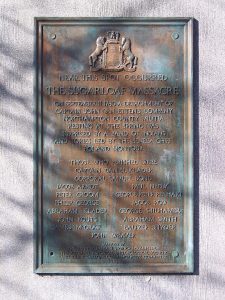
The bloodiest engagement of 1780 in Pennsylvania occurred on September 11. Known as the as the Battle of Nescopeck or the Sugarloaf Massacre, the brief clash involved seventy-five men on both sides. A detachment of forty-one Northampton County militiamen of Van Elten’s Company, under the command of Capt. Daniel Klader, were ordered to the region around present-day Hazelton to eliminate numbers of Loyalists who were reportedly continually active in their pursuits. Unaware of this, a party of thirty Seneca warriors and Loyalist Rangers, led by the extremely reliable and capable Capt. Roland Montour (whose family gave the name to Montoursville and Montour County) and Lt. William Johnson, was heading towards them through the Scotch Valley following their failure to capture Fort Montgomery. They had also been commanded to protect local Loyalists in the Catawisse Valley who had provided supplies for their operations.
Near the base of the Conyngham Mountain, following a difficult march through very rough terrain, Klader’s tired men saw an opportunity to rest and refresh themselves from their exhausting ordeal in an area that was relatively clear before moving on towards Berwick and Catawissa. Along the Little Nescopeck Creek, the Patriot force stacked their muskets and rifles and began to relax. The remoteness of their position and the availability of such things as edible wild grapes lulled Klader’s command into a false sense of security, which was not wasted on their enemies. Montour’s scouts witnessed this breach in military discipline and quickly reported back to his slightly outnumbered command. A daring plan ensued when it was decided that a surprise attack would be made, engaging the patriots before they could bring their superior firepower to bear.
At around noon, the bold strategy worked. When the first shots were fired, the startled patriots panicked at the sound of the Seneca’s war cries. Their few moments of repose proved deadly for the Patriot troops. Montour’s men seized their muskets and rifles, and then chased them along the creek for less than a mile. A brief fierce hand-to-hand struggle with small arms ensued with the forces of the Crown rapidly gaining supremacy. In the end, Klader and fourteen of his men were dead with three others captured. The completely demoralized remnants of Klader’s force hid throughout the area and eventually made their way back to safety to relay the tale of their defeat.
Klader’s second in command, Lt. John Myer, eventually escaped his captors and found his way back to Fort Wyoming. The fort’s commanding officer, Col. Zebulon Butler, was aghast at Myer’s report.[16] With all matter of vital military items and provisions already in short supply at the garrison, now there was a real threat of a Loyalist and Native American offensive which his forces were in no condition to thwart. But on September 15 about 150 men of the Northampton County Militia, commanded by Lt. Col. Stephen Balliet, departed from Fort Allen to survey the battlefield and bury the dead. It took them two days to reach the site. Balliet reported that they “found Ten of our Soldiers Dead, Scalped, Striped Naked, & in a most cruel and Barborous manner Tomahawked, their throats Cut, &c. &c. whom we Buired [sic.].”[17]
Ballet’s command never saw “any of these Black allies, & Bloody executors of British Tirany” as they returned to Fort Allen by the 19th after holding a religious service for their comrades. Montour had not paused for long after the battle despite suffering what would prove fatal wounds from being shot in the arm during the engagement. His men moved towards the community of Harvey’s Creek and on the 13th burned Benjamin Harvey’s sawmill and supplies of grain.[18] It was here that Myers saw his opportunity and escaped. Along the Susquehanna River on their route back to Fort Niagara, Mountour succumbed to his injury, which had turned gangrenous, and was buried with the full traditional honors of the Iroquois for a military leader. Several days later, the British forces arrived back at their main base with their two patriot prisoners.
As they had during the French and Indian War and to imitate the reported practices of the British under Governor Sir Henry Hamilton (infamously known in American History as The Hair Buyer) of Fort Detroit, the Pennsylvania authorities turned to a relatively futile and frequently abused gesture of offering paid bounties for Native Americans and Loyalists as a way to try and counter the attacks on the frontier. President Reed and his Supreme Executive Council authorized Col. Samuel Hunter “to offer the following premiums for every male prisoner whether white or Indian, if the former is acting with the latter, Fifteen Hundred Dollars and One Thousand Dollars for every Indian scalp.”[19] He later reaffirmed the order, after expressing sympathies concerning “this unexpected and cruel Invasion of the Savages” to Col. Jacob Stroud by stating again that “1500 Dollars for every Indian or Tory Prisoner taken in Arms against us & 1000 Dollars for every Indian Scalp.” He believed that “the Frontiers will never have Peace while the Country waits for the Enemy, but, on the other Hand, it will be in their Power with few and small Parties to harass & distress them greatly.”[20]
The scalp bounty law fell into disrepute as officially organized units killed friendly Native Americans to sell their scalps.[21] Earlier, in the year, Governor Reed had come to the conclusion that sending another massive expedition, at a cost this time to the State of Pennsylvania, back into the homeland of the Iroquois might be prudent.[22] Others throughout Pennsylvania were reaching similar conclusions. William Maclay, an influential state politician, believed the campaign should even be carried farther and that the goal should be “Niagara cost what it will.” He believed, and others shared his convictions, that “while the English continue to supply the Indians at Niagara, pay them and support them as at Present, Peace with the Indians us unattainable.” He felt that “a Small armey well equipped, secrecy and dispatch are most certainly all that can be necessary for this Purpose.”[23] John Armstrong, a fellow Pennsylvanian and a major general in the Continental army, echoed that the deplorable situation of the inhabitants of the Susquehanna Region must be “Speedily relieved,” or people should not be surprised if, by the harvest, communities such as “Carlisle should be a frontier” with everyone abandoning all sections of the state.[24]
Following the actions at Fort Montgomery and the subsequent debacle at Sugarloaf, the state militia was assembled in larger numbers to engage and destroy the British forces in the Susquehanna frontier region. Pennsylvania Militia Gen. James Potter took command of approximately two hundred men and marched through the region in a lengthy quest for the enemy. From Sunbury, they proceeded towards Muncy Hill. For a week, reports filtered in from scouts and spies that the enemy had struck in various locations causing property damage and minor casualties. Potter never located the enemy forces and by September 18 he returned with his soldiers to Sunbury. By this time, political pressure progressed to the commander-in-chief, who ordered the German Regiment withdrawn from the various fortifications to rejoin the main Continental Army along the east side of the Hudson River. The German Regiment, and especially their commanding officer, was accused of having little sensitivity for the plight of the residents. Pennsylvania Col. Samuel Hunter had previously reported that the German troops “stationed here in no ways adiquit to Grant us the Necessary Releife Required.”[25] William Maclay reinforced these sentiments, noting, “The German Regiment are posted at four different Places, But I do not find that they ever stir a foot out of their posts without some other Support.”[26] Consequently, Pennsylvania was now forced to garrison its own fortifications at Forts Montgomery, Jenkins, and Swartz, reducing manpower for offensive operations.
Conditions within Pennsylvania’s frontier regions continued to be severe throughout the remainder of 1780. As the previous winter had been one of the extremely harsh cold conditions, so had the following summer been one of severe heat. Constant raids by the Loyalists and their Native American allies, combined with a lack of adequate supplies, made life wretched for the residents of the region and the troops of their protecting garrisons. Complaints by Fort Wyoming’s commander, Col. Zebulon Butler, to the Pennsylvania authorities that the “Situation respecting provision is bad enough at present” produced little in positive results.[27] During this time, settlements in New York were bearing the full brunt of the British wrath for the Sullivan-Clinton Campaign, and Pennsylvania was still receiving retaliatory strikes all along the frontier. On November 19, as one final assault before the onset of winter, a detachment of nineteen soldiers of Butler’s Rangers, accompanied by five Native American, departed from Fort Niagara for the region around Wyoming. Following a two-week march through the harsh wilderness, they arrived at the summit of the Shawnee Mountain on December 6. Although no one was killed in the following action about two miles from present-day Wilkes-Barre, several prisoners were reported taken along with a small quantity of plunder.[28]
Throughout the fall of 1780, frequent alarms, whether true or false, of British raids kept Pennsylvania settlements on edge, and tales of kidnappings, killings, anarchy, and robbery continued to be the main topics of conversation. The British raids had clearly shown that the Sullivan-Clinton Campaign had negligible effect on pacifying the border region of Pennsylvania and neighboring New York. In all over three hundred patriots had been killed or taken prisoner; six forts and several mills had been destroyed; over seven hundred homes and barns had been burned to the ground; tons of grain had been ruined; hundreds of cattle were driven off; and the region’s economy was at the breaking point. Clearly, the goals of the British retribution, using numbers and resources far lower than those employed by Sullivan and Clinton, had been a success, with more suffering to come in 1781 for the citizens of Pennsylvania.
[1] James Madison to Thomas Jefferson, June 2, 1780, The Papers of James Madison, Congressional Series, March 20, 1780-February 23, 1781, ed., William T. Hutchinson and William M.E. Rachael, 17vols. (Chicago: University of Chicago Press, 1962-91), 2:37.
[2] John C. Fitzpatrick, ed, The Writings of George Washington from the Original Manuscript Sources 1745-1799, 39 vols. (Washington: Government Printing Office, 1931-44), 12:200.
[3] Ibid., 267.
[4] Joseph R. Fischer, A Well Executed Failure: The Sullivan Campaign Against the Iroquois July-September 1779 (Columbia, SC: University of Press, 1997), 156.
[5] Joseph Jones to James Hunter, June 2, 1780, Letters of the Delegates 1774-1789, 26 vols. (Washington: Library of Congress, 1976-2000) 15:235.
[6] Max M. Mintz, Seeds of Empire: The American Revolutionary Conquest of the Iroquois (New York: New York University Press, 1999), 157-158.
[7] Fischer, A Well Executed Failure, 192.
[8] Graymont, Iroquois, 224
[9] Ibid., 225.
[10] Ibid., 229.
[11] C. Hale Sipe, The Indian Wars of Pennsylvania (Lewisburg, PA: Wennawoods Publishing, 1999), 612.
[12] Herbert C. Bill, History of Northumberland County [PA] (Chicago: Brown, Runk & Company Publishers, 1891), 135.
[13] Samuel Hazard, ed., Pennsylvania Archives-Fifth Series, 8 vols (Philadelphia: Joseph Severna & Company, 1853), 8:567.
[14] Ibid.
[15] Sipe, Indian Wars, 619.
[16] Roger H. Moore, The Bloodstained Field: A History of the Sugarloaf Massacre September 11, 1780, (Bowie, MD: Heritage Books, Inc, 2000), 46.
[17] Hazard, Pennsylvania Archives, 564.
[18] Moore, The Bloodstained Field, 45.
[19] Hazard, Pennsylvania Archives, 167.
[20] Ibid.
[21] Sipe, The Indian Wars of Pennsylvania, 626.
[22] Fischer, A Well-Executed Failure, 193.
[23] Hazard, Pennsylvania Archives, 172-173.
[24] Ibid, 243.
[25] Ibid, 157.
[26] Ibid, 172.
[27] Ibid, 601.
[28] Moore, The Bloodstained Field, 52
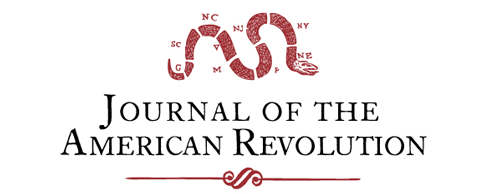



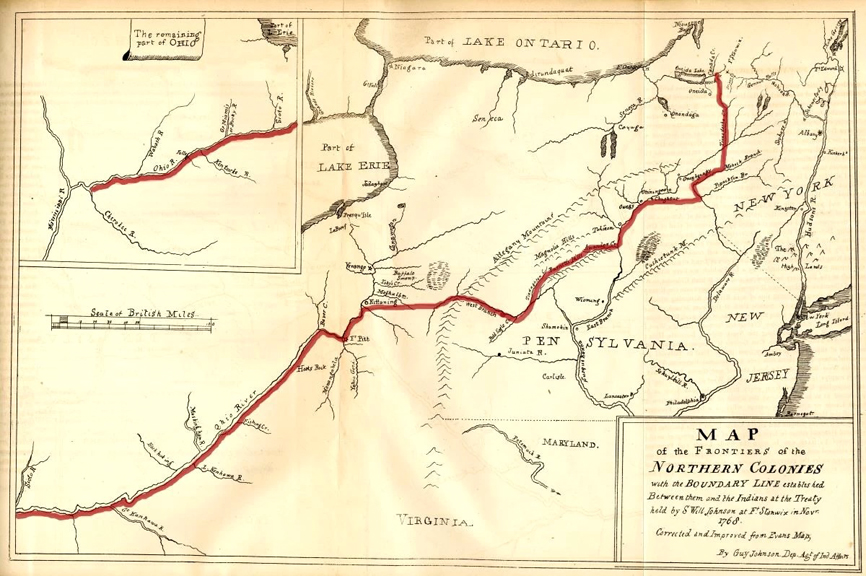
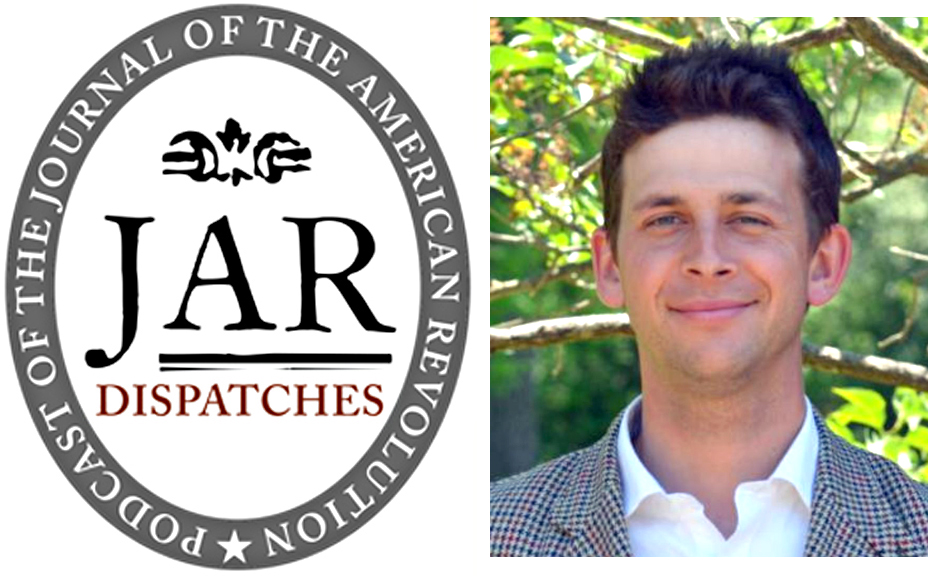
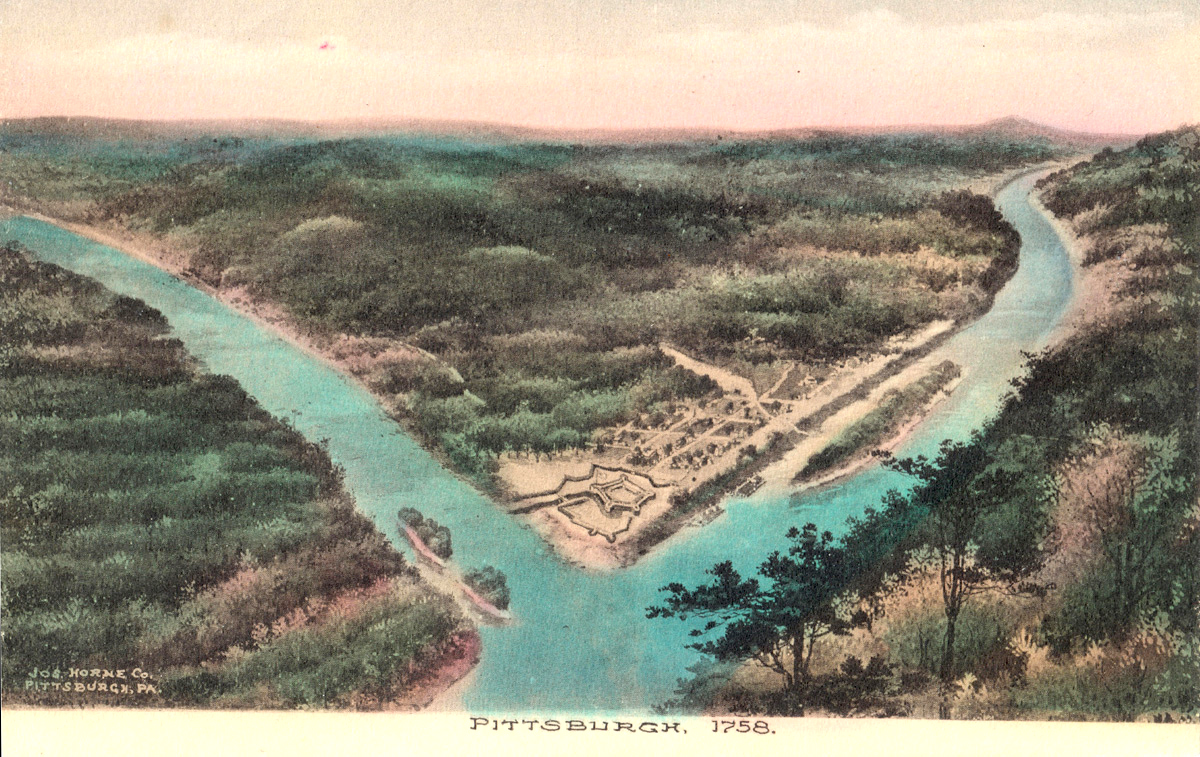

One thought on “Retribution in Pennsylvania: The 1780 British Counter-Offensive to the Sullivan-Clinton Campaign”
The 1779 Van Schaick, Sullivan and Brodhead Expeditions were not intended to put an end to raids on American frontier settlements by Provincial rangers and their Indian allies once and for all, but to “chastise-or punish-British-allied Indians for siding with the Crown, and to strain Britain’s logistical support for those allies. No one of the American side believed it would put an end the the raids once and for all, but only “for the season.” No one knew this more than General George Washington. To illustrate, to allay their concerns about leaving their states’ frontiers unprotected during the Sullivan expedition, Washington explained in letters to New York Governor George Clinton on April 5 and May 3, 1779, and Pennsylvania President Joseph Reed on April 19 and 27, 1779, “I am in hopes when the troops begin to operate, they will furnish too much employment to the Indians in their own Country to allow them to indulge their ravages in ours.”